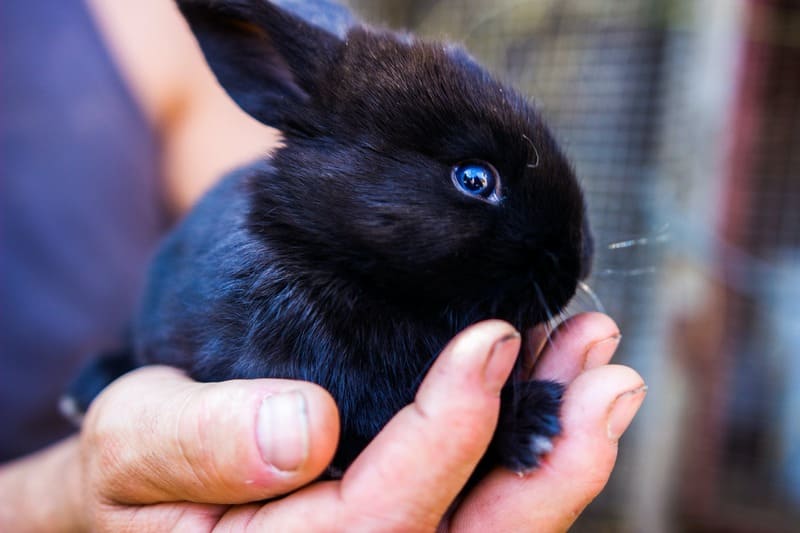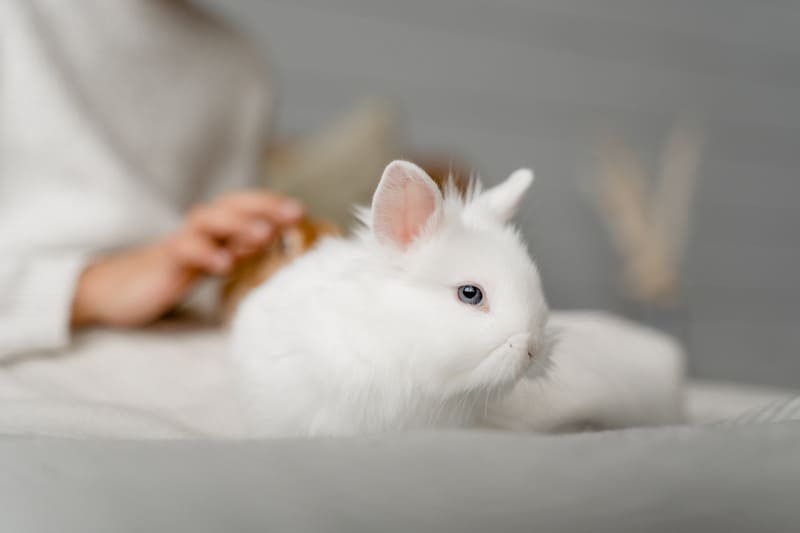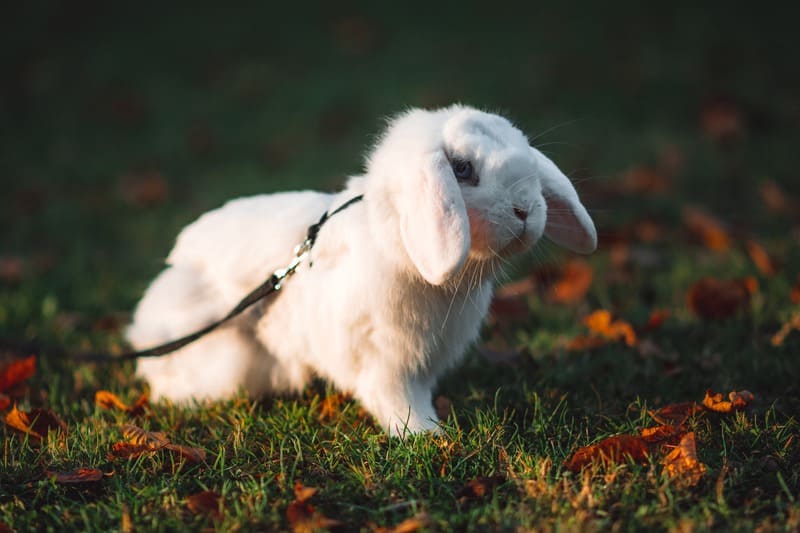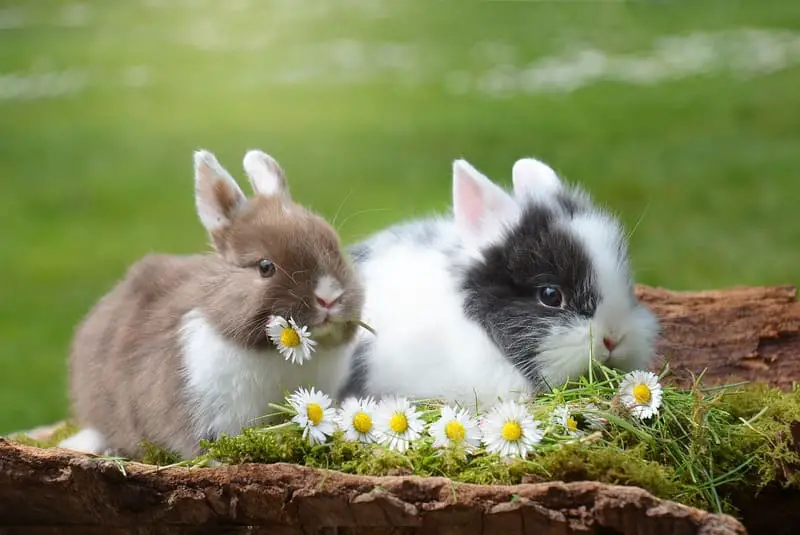Rabbits are wonderful and endearing creatures that have become increasingly popular as pets over the years. Their soft fur, twitching noses, and floppy ears make them an irresistible choice for many animal lovers. If you’re a new rabbit owner or considering bringing a rabbit into your home, one of the most crucial aspects of caring for your furry friend is knowing how to handle them properly. Handling a rabbit can be a bit more nuanced than it might seem at first, as these delicate creatures require a gentle touch and a good understanding of their behavior. In this comprehensive guide, we will explore how to handle your rabbit, covering everything from the basics of picking them up to bonding and building trust.

The Importance of Proper Rabbit Handling
Handling your rabbit correctly is vital for several reasons. First and foremost, it ensures your rabbit’s safety and well-being. Improper handling can lead to stress, injury, and even a breakdown of trust between you and your rabbit. Moreover, understanding how to handle your rabbit is essential for establishing a strong and positive human-animal bond. This bond not only makes for a happier and more content rabbit but also enhances the enjoyment of having a pet rabbit in your life.
Understanding Rabbit Behavior
Before delving into the practical aspects of handling a rabbit, it’s crucial to have a basic understanding of rabbit behavior. This knowledge will help you interact with your rabbit in a way that’s comfortable and reassuring for them.
Timid by Nature
Rabbits are naturally prey animals, which means they are hardwired to be cautious and skittish. They have a strong flight instinct and can be easily startled. It’s essential to remember that even the friendliest and most well-socialized rabbits may have moments of anxiety when they feel threatened.
Body Language
Rabbits communicate a lot through their body language. Here are some key signs to watch for:
- Thumping: When a rabbit thumps their hind legs, it’s usually a sign of fear or annoyance.
- Ears: The position of a rabbit’s ears can indicate their mood. Ears pointing forward generally mean curiosity, while ears flattened against their back suggest fear or aggression.
- Eyes: Wide eyes may mean excitement, fear, or surprise. Half-closed eyes often signify contentment.
- Posture: A relaxed rabbit will have a lowered body posture. An upright or tense stance can indicate anxiety or defensiveness.
Understanding these cues is essential for gauging your rabbit’s comfort level during handling.
Sensitive to Noise and Sudden Movements
Rabbits have very acute senses, particularly when it comes to hearing. Loud noises, sudden movements, or even the sound of unfamiliar voices can startle them. To handle your rabbit effectively, create a calm and quiet environment during the interaction.

The Basics of Picking Up a Rabbit
Properly picking up a rabbit is the first step to successful handling. It’s essential to approach this carefully to ensure both your safety and the rabbit’s comfort. Follow these steps:
- Wash Your Hands: Before handling your rabbit, make sure your hands are clean. Rabbits have a keen sense of smell, and they will notice any unusual scents.
- Approach Slowly: Move calmly and confidently toward your rabbit. Do not make sudden or fast movements, as this can frighten them.
- Pet and Soothe: Before attempting to pick up your rabbit, spend some time petting and soothing them. This will help your rabbit feel more at ease with your presence.
- Lift with Two Hands: Place one hand under your rabbit’s chest, just behind the front legs, and the other hand under their hindquarters. Gently lift the rabbit, ensuring that their body is fully supported. It’s essential to keep their spine straight to avoid injury.
- Hold Securely: Once you’ve picked up your rabbit, hold them securely against your chest or in your arms. Ensure that their legs are comfortably supported and not dangling.
- Avoid Sudden Movements: While holding your rabbit, avoid any sudden or jerky movements. Sudden motions can startle the rabbit.
- Speak Softly: Talk to your rabbit in a calm and soothing voice. This can help them feel more comfortable while being held.
- Be Mindful of Their Reactions: Pay close attention to your rabbit’s body language. If they show signs of distress, such as trying to squirm, biting, or struggling to escape, it’s best to put them down gently and give them some space.
Gaining Trust and Building a Bond
Gaining your rabbit’s trust is a gradual process that requires patience and consistency. It’s essential to understand that not all rabbits are the same, and some may be more reserved than others. Here are some tips to help you build a strong bond with your rabbit:
Spend Time Together
Rabbits are social animals and enjoy spending time with their human companions. Sit with your rabbit, read a book, or just be in their presence. The more time you spend together, the more your rabbit will become accustomed to your presence.
Offer Treats
Treats are an excellent way to win your rabbit’s heart. Offer small, healthy treats like fresh vegetables, hay, or a piece of fruit. This positive association will make your rabbit more inclined to trust and bond with you.
Provide Safe Exploration
Allow your rabbit to explore their environment safely. This could mean creating a rabbit-proofed space in your home or providing them with a safe outdoor enclosure. This exploration helps them build confidence and become more comfortable with you.
Groom Your Rabbit
Grooming your rabbit is not only essential for their health but also an excellent way to bond. Brushing your rabbit’s fur and inspecting them for any health issues can be a bonding experience. Make sure you use a soft brush and be gentle to avoid hurting your rabbit.
Speak Softly and Pet Gently
Rabbits enjoy gentle petting and soothing words. While spending time with your rabbit, talk to them in a calm, reassuring tone and pet them gently. This will help them associate your touch and voice with comfort and security.
Respect Their Boundaries
It’s essential to respect your rabbit’s boundaries. If your rabbit wants to be left alone, give them some space. Forcing interaction can lead to stress and fear.
Be Patient
Building trust and a strong bond takes time. Be patient and understanding of your rabbit’s needs and personality. Some rabbits may warm up quickly, while others may take a more extended period to feel completely comfortable.

Handling Different Types of Rabbits
Rabbits come in various breeds and sizes, and each rabbit may have a unique temperament. Here are some general guidelines for handling different types of rabbits:
Dwarf and Miniature Breeds
Dwarf and miniature rabbits are smaller and often more delicate than larger breeds. When handling them, take extra care not to squeeze or put too much pressure on their bodies. They can be more prone to injury, so a gentle touch is crucial.
Larger Breeds
Larger breeds like Flemish Giants or Checkered Giants may be more robust, but the same handling rules apply. Support their bodies properly, and be cautious not to drop them or make sudden movements.
Long-Haired Breeds
Long-haired breeds require regular grooming to prevent matting and health issues. When handling long-haired rabbits, be extra gentle with their fur and ensure that you are not causing any discomfort or pain during grooming.
Nervous or Shy Rabbits
Some rabbits are naturally more timid and shy. When handling such rabbits, it’s crucial to be even more patient and gentle. Spend time sitting with them and allowing them to come to you at their own pace.
Social and Outgoing Rabbits
On the other hand, some rabbits are naturally more social and outgoing. They may enjoy more interactive play and handling. However, even with these rabbits, it’s essential to be mindful of their comfort level and boundaries.
Common Mistakes to Avoid
To ensure a positive and safe experience for both you and your rabbit, it’s important to be aware of common mistakes that rabbit owners make when handling their pets. Avoid these errors:
Grabbing or Squeezing
Never grab your rabbit or squeeze them too tightly. This can cause injury or discomfort. Always support their body and handle them gently.
Not Being Mindful of Their Position
Rabbits can easily become frightened if they feel unbalanced or unsupported. Make sure to keep their body level when you’re holding them to prevent them from squirming or panicking.
Forcing Interaction
Respect your rabbit’s boundaries. If they don’t want to be held or petted at a particular moment, don’t force the interaction. Forcing them to be handled can lead to fear and a breakdown of trust.
Neglecting Bonding Time
Rabbits require social interaction. Neglecting to spend time with your rabbit can lead to loneliness and a lack of trust. Regular interaction is essential for maintaining a strong bond.
Ignoring Health and Grooming
Regularly groom your rabbit and check for any health issues. Ignoring their grooming and health needs can lead to discomfort and stress.

Special Considerations for Children
If you have children in the house who want to interact with the rabbit, it’s crucial to supervise their interactions and teach them how to handle the rabbit safely. Here are some additional tips for involving children with your rabbit:
Teach Gentle Handling
Children should be taught to handle the rabbit gently and with care. Explain the importance of supporting the rabbit’s body and avoiding sudden movements.
Supervision
Always supervise children when they are interacting with the rabbit. Children may not always understand the rabbit’s signals or may unintentionally mishandle them.
No Chasing
Teach children not to chase the rabbit. Rabbits can become very stressed if they feel pursued or cornered.
Encourage Calm Interactions
Children should be encouraged to approach the rabbit calmly and quietly. Loud noises or sudden movements can frighten the rabbit.
Set Boundaries
Help children understand when the rabbit needs space and when it’s open to interaction. Respect the rabbit’s boundaries.
Introducing Your Rabbit to Other Pets
If you have other pets, such as dogs or cats, it’s important to introduce your rabbit to them gradually and with caution. Here are some steps to follow when introducing your rabbit to other animals:
- Separate Spaces: Initially, keep your rabbit in a separate space from your other pets. This allows them to get used to each other’s scents without direct contact.
- Supervised Encounters: When you do introduce them, do so in a controlled and supervised environment. Keep the other pets on a leash or in a carrier and let the rabbit approach them at its own pace.
- Observe Reactions: Pay close attention to the reactions of all animals involved. If any of them show signs of aggression or extreme stress, separate them immediately.
- Gradual Increase in Interaction: Over time, gradually increase the amount of time the animals spend together, always under supervision. This should be done in a way that allows the rabbit to retreat to its safe space if needed.
- Positive Reinforcement: Reward all animals with treats and praise for calm and positive interactions.
- Patience: The process of introducing your rabbit to other pets may take time. Be patient and do not rush the process.
Remember that not all dogs and cats have the temperament to coexist peacefully with a rabbit, so be prepared to accept that it may not be possible in all cases.
Special Situations: Handling During Illness or Injury
There may be times when you need to handle your rabbit for medical reasons, such as when they are injured or need medication. Handling a rabbit in these situations requires extra care and consideration:
- Stay Calm: Your rabbit can pick up on your emotions, so it’s important to stay calm and composed. Speak softly and reassuringly.
- Gently Secure Your Rabbit: Use a soft towel or blanket to gently secure your rabbit if they are in pain or agitated. This can help prevent them from squirming or hurting themselves further.
- Seek Veterinary Assistance: If your rabbit is injured or ill, it’s best to consult with a veterinarian for guidance on how to handle them during treatment.
- Medication Administration: If your rabbit requires medication, follow your veterinarian’s instructions carefully. Some medications can be mixed with a treat or food to make administration easier.
- Regular Checkups: Even when your rabbit is not ill, it’s essential to schedule regular checkups with a veterinarian to ensure their ongoing health and well-being.

Traveling with Your Rabbit
If you need to travel with your rabbit, whether for a vet visit, a vacation, or a relocation, it’s essential to ensure their safety and comfort during the journey. Here are some tips for traveling with your rabbit:
Secure Carrier
Invest in a secure and well-ventilated carrier for your rabbit. Make sure it has a solid bottom, and line it with a soft, absorbent material.
Familiarize Your Rabbit
Allow your rabbit to become accustomed to the carrier before the trip. Place it in their living area and add some treats or toys inside to create a positive association.
Bring Essentials
Pack essential items for the journey, including fresh water, a small amount of food, and any necessary medications. You may also want to bring some of your rabbit’s favorite toys or a familiar blanket to provide comfort.
Reduce Stress
Minimize stress during travel by keeping the environment as calm and quiet as possible. Avoid loud music or sudden movements.
Regular Breaks
If the journey is long, make sure to stop for regular breaks to allow your rabbit to stretch and have some water and food.
Consult Your Veterinarian
If you have concerns about traveling with your rabbit, consult your veterinarian for advice and any specific recommendations based on your rabbit’s health and needs.
Conclusion
Properly handling your rabbit is a critical aspect of responsible rabbit ownership. It not only ensures their safety and well-being but also contributes to the development of a strong and positive bond between you and your furry friend. Remember to approach your rabbit with patience, respect their boundaries, and provide the care and attention they need to thrive as a beloved member of your family. By understanding their behavior, following best practices, and being mindful of their individual needs, you can enjoy a long and fulfilling relationship with your pet rabbit.
